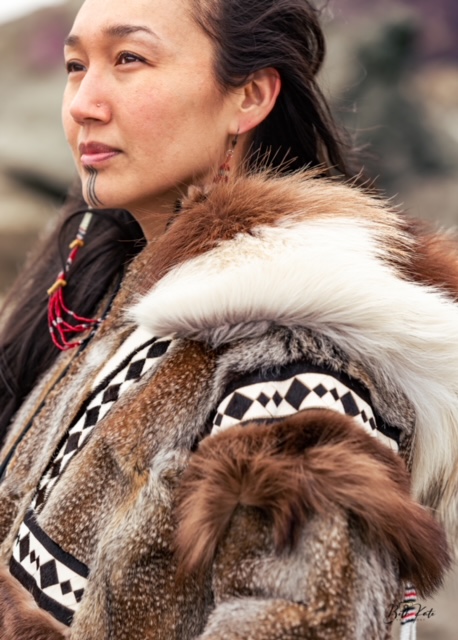
- Details
- By Elyse Wild
With an egregious lack of data underpinning the country's ongoing Missing and Murdered Indigenous Peoples (MMIP) Crisis, Charlene Apok, the executive director and co-founder of Data for Indigenous Justice — an Alaska Native women-led nonprofit that houses data on MMIP — says the report is a step in the right direction.
Data for Indigenous Justice began collecting data on MMIP in 2018 through a grassroots effort that Apok said "just began with a Google doc." Their work resulted in the first MMIP database for Alaska. Alaska is among the ten states with the highest number of missing and murdered Indigenous people.
Apok spoke to Native News Online about why data is a critical tool in the MMIP crisis and how Native communities can collect data to create solutions and leverage their sovereignty.
Why is the data so critical to this issue?
Data can and should be the bridge between multi-sector solutions. This is a systemic issue. People should be aghast when they see the report that just came out. They should say, 'Whoa, this has been happening for decades!' The report shows that this has been happening across the state for decades.
Data must be what bridges states, the federal government, tribes and community partners in coming together on this issue. Everyone is going to have different areas of expertise. Everyone has their part to play in the solution, but having the correct information at hand is what everyone will need to do that.
Data is a really powerful tool in informed decision-making.
This report is one step in the right direction. It indicates agencies collaborating, which has been an ask for a long time. It's the beginning, but there can be so much more.
What else would you like to see from the state, whether it be the Alaska Department of Public Safety or other branches of state government?
There's so much complexity. There are a lot of asks and recommendations being made.
Data is slightly different when Indigenous peoples are leading, tracking and documenting our stories and our lives versus how data shows up in the law enforcement database. And that's OK, but we want some of that to be translated so we all have a baseline of a common goal.
We've been looking for agencies to collaborate for a long time, and this collaboration between the state troopers and the Alaska Department of Public Safety is the one we have seen, but it is also not mandated.
There could be some strong mandates for data reporting with law enforcement entering data into the National Missing and Unidentified Persons System (NamUs), which is something that they started to do for this report. But there are only so many states that have mandated data being entered into NamUs, and Alaska is not one of those states. With changes in administration, reports like this could cease to exist. One of the congressional asks at the federal level would be to mandate entry into the NamUs database, which is a no-cost ask.
Also, we need noncompetitive renewed funding for the tribal justice system. Right now, we have so many tribes that are piecing together just to operate their courts. Finding mechanisms where they can have noncompetitive renewed funding would be an incredible solution that could help support their sovereignty and self-determination about what changes will look like in their communities.
We would love to see cultural training for law enforcement as well.
These reports are going to be issued quarterly. How will we know if these reports are effective?
It's a great step in the right direction. But how does this translate into meaningful change in case management and interaction enforcement with our community? We know that there's still a lot of mistrust. We know that there will be many more opportunities for justice in how the cases are handled and how they're being tracked. And so I hope that when we see something, we actually arrive at more questions, and then we can have a better picture of what is going on — and what isn't here and what isn't going on.
Was Data for Indigenous Justice consulted in creating this report?
We have been making recommendations for a long time. The case classification in the report is one of the recommendations we've advocated for years. The classification lists whether a disappearance was suspicious, not suspicious, unknown and environment. That differentiates whether someone was hiking or hunting and went missing or whether criminal activity may have been involved.
That update is actually one that we have recommended for a long time. We don't have a formalized partnership with them. We have been meeting with many law enforcement agencies, including APD and the state trooper. They took the recommendations because we've been pretty vocal about it. But we don't necessarily get credit for what we identified as needs as missing in data, but it isn't about credit.
What can Native communities do to track and keep their own data around this issue?
It sounds really intimidating, but research and data are something that we have done as indigenous people since time immemorial. We have always gathered and used information available to us to make decisions by and for the benefit of our people.
Even if it feels intimidating, this is something we innately know.
It just takes people being willing to come together and share their stories and steward the information. Then you form a collective voice and are able to say: 'This is our truth. This is what we know. We have it right here."
More Stories Like This
Native News Weekly (August 25, 2024): D.C. BriefsUS Presidents in Their Own Words Concerning American Indians
Deb Haaland Tours CNM Workforce Facilities, Highlights Trade Job Opportunities
Federal Court Dismisses Challenge to NY Indigenous Mascot Ban
Sen. Angus King Warns of ‘Whitewashing’ History in National Parks Under Trump Administration
Help us defend tribal sovereignty.
At Native News Online, our mission is rooted in telling the stories that strengthen sovereignty and uplift Indigenous voices — not just at year’s end, but every single day.
Because of your generosity last year, we were able to keep our reporters on the ground in tribal communities, at national gatherings and in the halls of Congress — covering the issues that matter most to Indian Country: sovereignty, culture, education, health and economic opportunity.
That support sustained us through a tough year in 2025. Now, as we look to the year ahead, we need your help right now to ensure warrior journalism remains strong — reporting that defends tribal sovereignty, amplifies Native truth, and holds power accountable.
 The stakes couldn't be higher. Your support keeps Native voices heard, Native stories told and Native sovereignty defended.
The stakes couldn't be higher. Your support keeps Native voices heard, Native stories told and Native sovereignty defended.
Stand with Warrior Journalism today.
Levi Rickert (Potawatomi), Editor & Publisher


